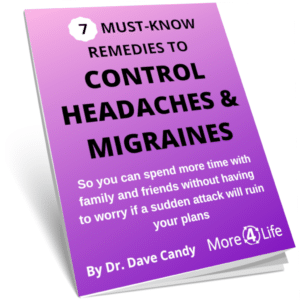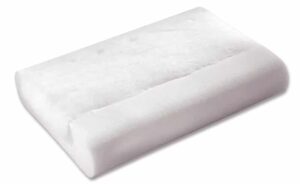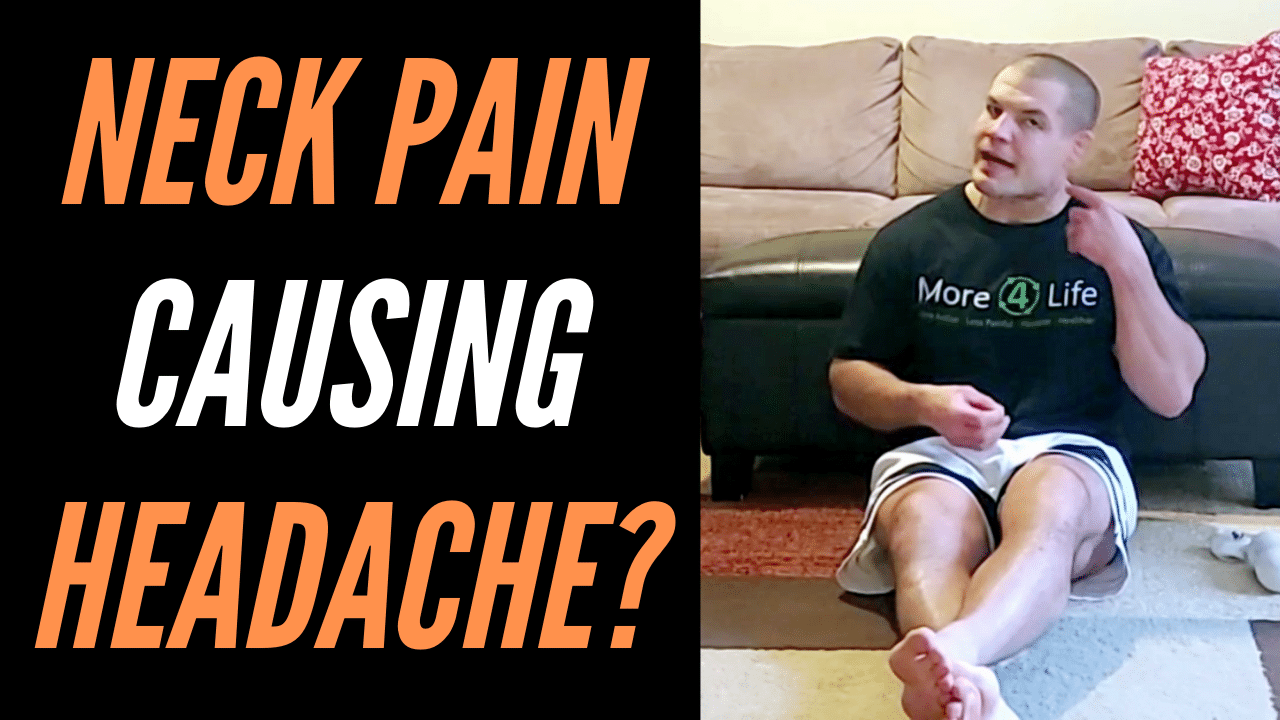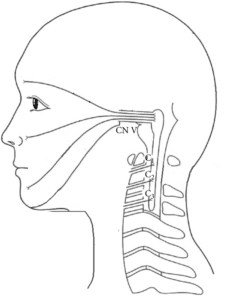Is Your Neck Pain Causing A Headache?
Neck pain can cause many different types of headaches. Watch the video to learn how to relieve neck pain causing headache.

Neck Pain Can Cause Many Types Of Headaches
Headaches can be classified into two main classes: primary headaches and secondary headaches.
Primary headaches are headaches that are the primary problem in and of themselves. Conversely, secondary headaches are headaches that are a secondary consequence of some other problem.
The 3 Most Common Primary Headaches are:
- Tension headaches
- Migraines
- Cluster Headaches
Tension Headaches
Tension headaches are band-like headaches that wrap around the sides of the the head into the forehead. They usually occurs on both sides of the head.
Episodic tension headaches come and go and usually only last for 30 minutes at a time. Contrarily, chronic tension headaches can last for months.
Although the exact cause of tension headache is not known, physical therapy and dry needling have been shown through research to be helpful for both episodic and chronic tension headaches.
Migraines
Migraines tend to be more severe than tension type headaches. They usually only occur on one side of the head, but they can be pounding or throbbing. When people suffer from a severe migraine headache, it usually disables them for a brief period and makes it difficult to do anything other than rest. Sometimes they can even cause nausea or vomiting.
Bright lights, loud sounds, or smells can be triggers for migraines.
Cluster Headaches
Cluster headaches are an intense type of headache that lasts upto a few hours, daily, for several months. Unfortunately, there isn't usually an easily identifiable trigger for these types of headaches. These type of headaches are not typically related to neck pain, and so we won't further discus them during this post.
Secondary Headaches Caused By Neck Pain
There are many different causes of secondary headaches, most of which go far beyond the scope of this post.
However, a few of the most common secondary headache causes include:
- Cervicogenic headaches, which are caused by neck pain
- Headaches from a sinus infection
- Hypoglycemic headaches caused by low blood sugar
- Hypertension headaches caused by high blood pressure
- TMJ headaches
It's also worth mentioning that some types of secondary headaches can be caused by more serious problems such as a brain tumor or a stroke. Some signs that your headache might require immediate attention include:
- A new or recent onset of a severe headache without a prior history of headaches
- Recent head or neck trauma such as a fall or car accident
- A headache unlike any other headache you've had before, especially if you're over 50
- Changes in your vision, speech, or ability to swallow
- Numbness or tingling in your face
- Ringing in your ears
- Seizures, fainting, or vomiting
Cervicogenic Headaches
Cervicogenic headaches, as the name implies are headaches caused by your neck. (cervico = neck, genic = produced by).
Cervicogenic headaches can be caused by painful muscles, joint, and/or nerves in the neck.
They are typically more on one side of the head and worsened with neck pain and/or neck movement.
Fortunately, treating the painful joints and muscles in the neck can help relieve headaches caused by neck pain.
Is Your Neck Pain Causing Headaches?
Click the button below to get a Free Consultation with one of our specialists:
in-person, online, or by phone
How Does Neck Pain Cause Headache?
As mentioned above, headaches can be caused by painful muscles or joints in your neck.
Myofascial (Muscle) Trigger Points
Many of the muscles in your neck have pain referral patterns that go into the head. Some of the most common ones include the:
- Sternocleidomastoid (a + b)
- Upper Trapezius (c)
- Suboccipitals (e)
Neck Joints & Nerves Can Cause Headaches
The upper three levels in your neck, C1-C3, share a common nucleus or "nerve terminal" with the the trigeminal nerve that innervates your head and face. This trigeminocervical nucleus can help explain neck pain causing headaches.
If there's a joint dysfunction in the upper 3 levels of the neck, that signal can get misinterpreted as a headache.
How To Relieve A Headache Caused By Neck Pain
The first step in treating headaches caused by neck pain is identifying what structures are causing the headaches.
Treating the joints or muscles that are referring pain to your head can help relieve migraines, tension headaches, and cervicogenic headaches temporarily.
However, if you want lasting relief from neck pain and headaches, you need to find out not only WHAT structures are causing the pain, but WHY they started hurting in the first place.
Additionally, beyond just your neck, other factors like diet, activity level, stress, anxiety, depression, can contribute to your headaches as well.
Want To Discover The Root Cause Of Your Neck Pain And Headache?
Tap the button below to request a Free Discovery Visit
Does Stretching Help Neck Pain Causing Headaches?
If you have stiff neck muscles that are causing your headaches, it makes sense to stretch them.
It's especially common for people with headaches to have stiffness in the suboccipital muscles at the base of the skull.
Use these stretches to help neck pain and headaches at the base of the skull:
- Neck Pain & Headaches At The Base Of The Skull On Both Sides
- One-Sided Neck Pain & Headaches At The Base Of The Skull
However, you shouldn't just stretch a muscle because it's sore.
Some neck muscles hurt because they're too lengthened.
This is a common problem with the upper trapezius muscle... the muscle at the base of your neck above the shoulder blades.
Many people "carry their stress" in their upper trapezius, and it's common to develop trigger points in those muscles.
However, if the muscle is hurting because it's too long, then stretching it can actually make the problem worse in the long term.
Try these neck exercises instead:
- How to stretch your neck when you have a lengthened upper trapezius
- Exercise to help a lengthened upper trapezius
Trigger Point Release For Neck Pain And Headaches
Treating myofascial trigger points can help relieve neck pain and headaches.
This can be in the form of manual trigger point therapy or dry needling by a physical therapist.
You can also do it at home using tennis balls placed inside a sock, as shown in the video above.
Self Trigger Point Release For Neck Pain Causing Headache
- Put 2 tennis balls inside a tube sock
- Fasten the sock shut using a rubber band
- Lay on the floor with your knees bent
- Place the tennis balls behind your neck at the base of your skull, with one ball on either side of the spine.
- Take deep breaths using your diaphragm by making your belly rise as you breathe in, and letting your belly fall as you breathe out.
It is MOST effective to do this lying on the floor so that you have a firm surface to place the tennis balls against.
If you can't get on the floor, a firm mattress works OK, but probably not as well.
If you have to lay on bed, using a device like the CranioCradle can help.
CranioCradle Sport DT (Deep Tissue) - Qu...
$49.95 ($49.95 / Count) (as of July 25, 2024 16:46 GMT -05:00 - More infoProduct prices and availability are accurate as of the date/time indicated and are subject to change. Any price and availability information displayed on [relevant Amazon Site(s), as applicable] at the time of purchase will apply to the purchase of this product.)Additionally, the CranioCradle can get a little more accurate than tennis balls since the contact points are narrower.
Of course, it's still not as accurate as getting treatment from a therapist who is trained in finding and treating trigger points, but the fact that you can use it at home between your therapy sessions helps make the effects last longer.
Need A Manual Physical Therapist To Help With Trigger Points In Your Neck?
Click here to request an appointment
Does Sleeping Position Affect Neck Pain And Headache?
Absolutely, yes.
Sleeping position does affect neck pain and headaches. Click here to learn about sleeping positions to relieve neck pain.
Pillows Neck Pain Causing Headache
In addition to sleeping position the pillow you use also matters if you have neck pain that causes a headache.
Your pillow should fully support your head and neck in a neutral position.
If you're a side-sleeper, your pillow should be thick enough to keep your head from dropping down toward the bed, but not too thick that is pushes your head up toward your top shoulder.
If you're a back sleeper, your pillow should support he curve in your neck without causing it to be excessive. This is where a lot of so-called neck pillows go wrong. Often there is TOO MUCH support and it throws you in a position of excessive neck arch.
This excessive neck curve position is a problem for people with neck pain and headaches, especially if you work at a desk use a computer, or look down at your phone a lot.
Try This Pillow If You Have Neck Pain Causing A Headache

Pillopedic Pillow
Click Here To Buy
The Pillopedic pillow is like 4 pillows in one.
The one of the long edges is thicker and the other is thinner to offer the appropriate amount of height.
In addition, the density of the pillow changes from softer to firmer as you move down the length of the pillow, so depending on how your neck is feeling that night, you can turn your pillow to have the right fit every night. Learn more
Can Posture Affect Neck Pain Causing Headache?
Again, absolutely yes!
If you work at a desk or spend a lot of time sitting with your head in front of your shoulders, your neck muscles have to work really hard to hold the weight of your head.
Eventually this increased muscle tension can cause trigger points in the neck muscles. This in turn can cause neck pain and headaches.
Use these tips to prevent neck pain when sitting at a desk.
Need More Help For Neck Pain And Headaches?
Click here to request an appointment with one of our specialists





